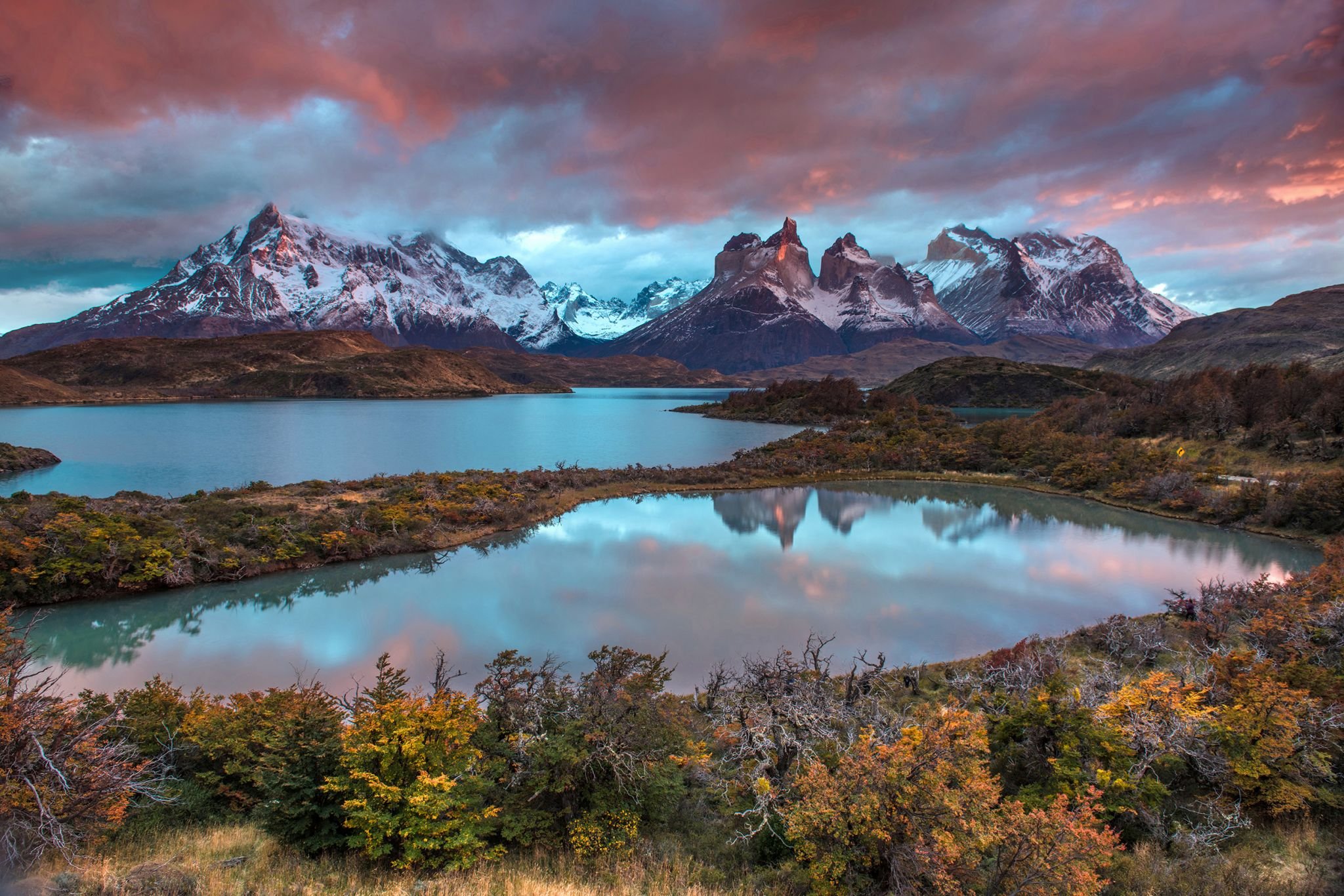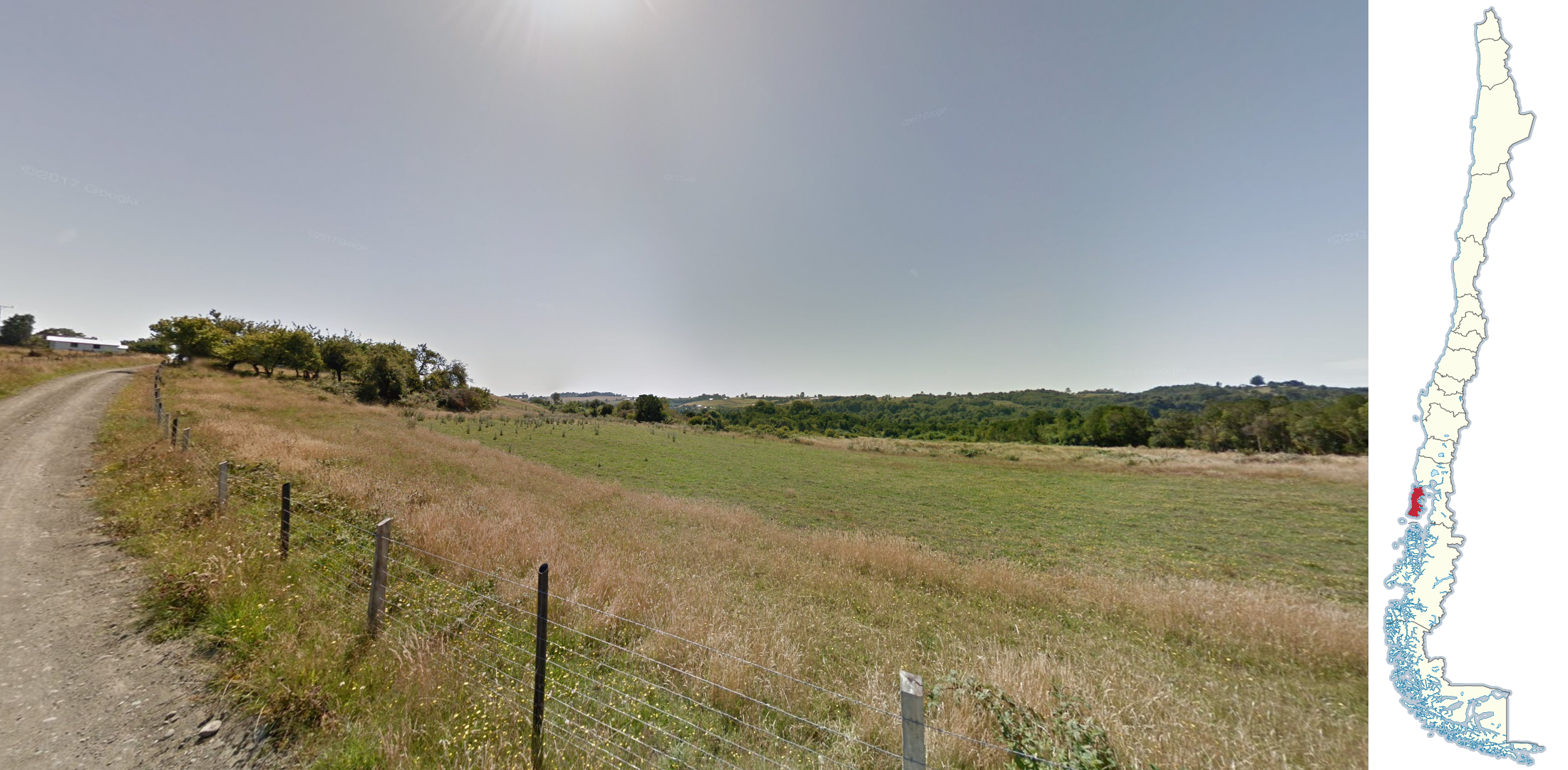
Chile
Chilean road lines are either all white, or all yellow:
All white road lines are most common. Within the Americas, they are a good clue for Chile, though not completely unique.
All yellow road lines are seen in National Parks or areas of high snowfall. Within the Americas, these all yellow road lines are essentially unique to Chile.
You will almost never see a combination of the two colours, apart from a few rare exceptions.
NOTE: It is important to note that Argentina has a decent amount of roads with all white road lines.
Chile has a white Google Car with no antenna in Generation 3. There are two variants:
A plain white car (left).
A white car with a visible black section (right). This car is unique to Chile.
A blue Google Car can be seen in Generation 4.
NOTE: In Generation 3, a plain white Google Car with no antenna can also be seen in Peru and Bolivia.
Shown here is a Köppen climate map of Chile.
Chile is a long and narrow country that spans more than 4,000 kilometres from north to south, meaning that its climate varies significantly due to latitude.
The northern parts of the country, which lie in the tropical zone, are dry and arid, leading to a mild desert climate. In the centre, around the capital, the climate becomes less arid, leading to a temperate mediterranean climate. In the southernmost regions of Chile, which lie in the subantarctic zone, the climate is cold and wet, leading to a cool oceanic climate.
You can click on the image to enlarge it.
Landscape
The Atacama is an extremely arid desert covering the northern third of Chile. Some parts of it experience the lowest rainfall on the planet. As a result, many locations in this desert are almost completely devoid of any vegetation: you will often just see sand and bare rock without any plants in sight anywhere.
NOTE: The Atacama Desert also covers parts of southern Peru, western Bolivia and northwestern Argentina.
The province of Arica y Parinacota can be recognized by the smooth, sandy mountains that may look slightly eroded, or have bulbous formations. Valleys are also common, which are rarely seen in other parts of Chile.
Recognisable roads
Part of Ruta 41 is located in a valley, with snowy mountains seen in the distance. Many trees and vineyards can commonly be seen toward the west. Triple yellow lines can also be seen from this point.
Nature parks
Smooth mountains with a reddish tint are seen in Los Flamencos National Reserve. Salt pans are also a common sight. The reserve uses triple yellow lines, with short dashes in the west.
In the west, Nevado Tres Cruces National Park can be recognized by the vast, open landscape, followed by salt pans leading up to a line of mountains. The sand has a reddish tint.
In the east, the Google Car drives up a mountain pass with views of lightly snow-capped volcanoes and snow on the side of the road. The roads in the National Park are paved.
Llanos de Challe National Park can be recognized by the brown coloured dirt on the roadside, patches of light sand, juniper plants, and dark coloured mountains. The sky is overcast in most of the coverage.
NOTE: Pan de Azúcar National Park looks similar, however has less vegetation.
A vast, mostly treeless landscape combined with triple yellow lines are seen in Alto Bio Bio National Reserve. While the reserve may look dry, there is a distinct cold and high altitude feel. Monkey puzzles are also seen toward the east.
NOTE: Ruta 181 leading up to the reserve also has triple yellow lines, however, is less vast with more vegetation.
Puyehue National Park can be recognized by the dense vegetation surrounding the road. The pavement itself has triple yellow lines, and tar snakes are frequently seen. In the east, many dead trees can be seen with a lack of leaves.
Cities
O’Higgins can be recognized by the large mountains to the east, often casting a shadow over the town. To the west, snow-capped mountains are seen further in the distance.
Lamps
Poles
Poles in Arica feature white paint with a black number, while the other cities in the Atacama Desert feature poles with yellow paint. Keep in mind the paint may have faded, making it look white.
Special Google cars
A grey Toyota Hilux, with various gear loaded and a snorkel on the front right, can be seen from around Baños Morales to this point, where the trekker continues the journey on foot.
Puerto Williams, the southernmost town covered by street view, can be recognized by this white pickup truck with visible side mirrors.
NOTE: The Puerto Williams coverage is located fairly far away from the normal car coverage in Chile. The nearest normal car coverage is in Fuerte Bulnes, near Punta Arenas.
Trekkers
Note: there are many trekkers in Chile. This section highlights a small selection of some of the most notable and unique ones.
GeoGuessr’s own official maps are not very good, for a variety of reasons. Plonk It recommends you play this map instead:
A Balanced AI Generated Chile (map link) - Over 80,000 AI generated locations in Chile. May not be pinpointable. This map is also used for Plonk Its official Chile region streak leaderboard.
In addition, here are some resources to help you practise Chile:
Plonk It Chile (map link) - This map contains locations for practising each meta in the Plonk It Chile guide from step 2 to 3.































































